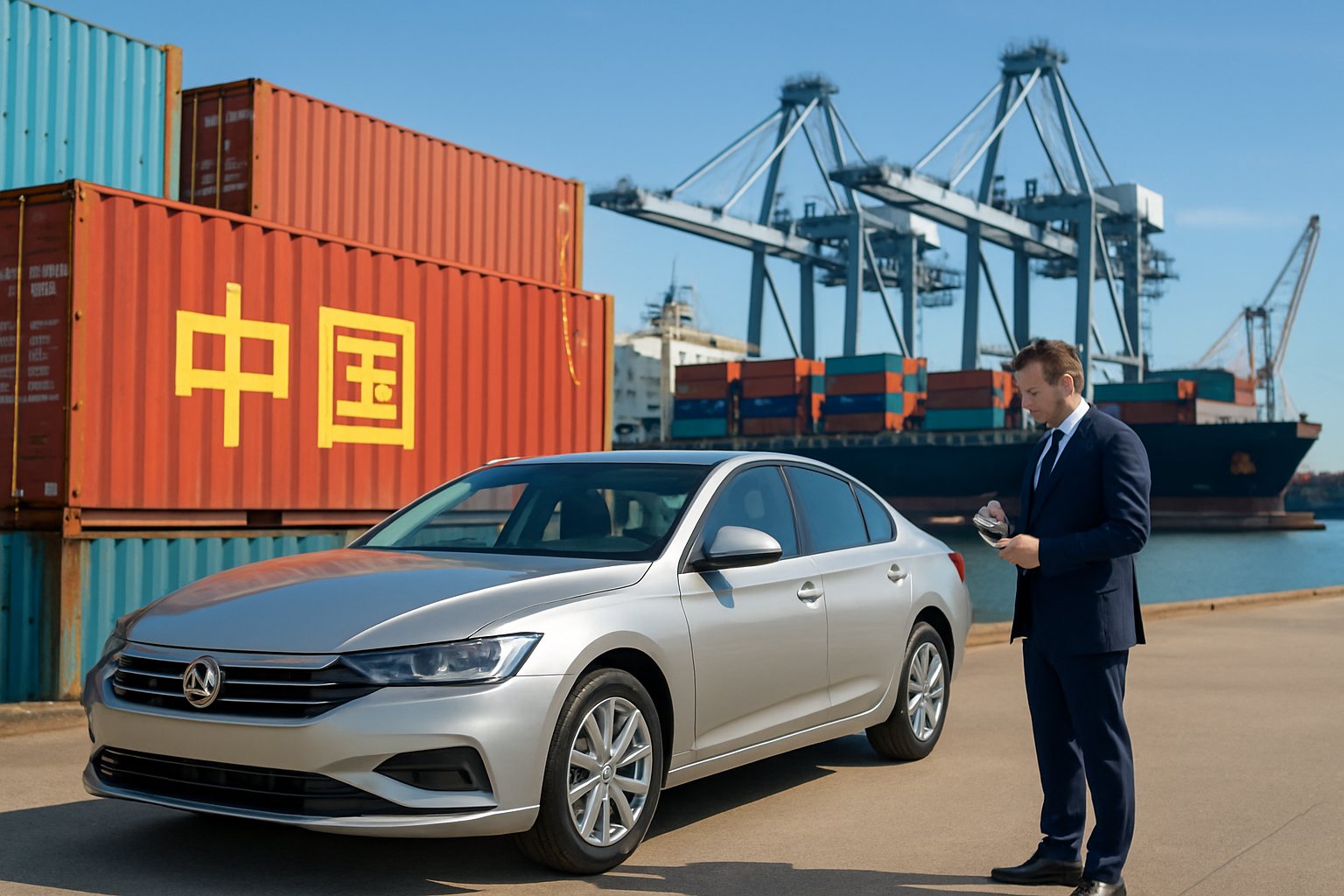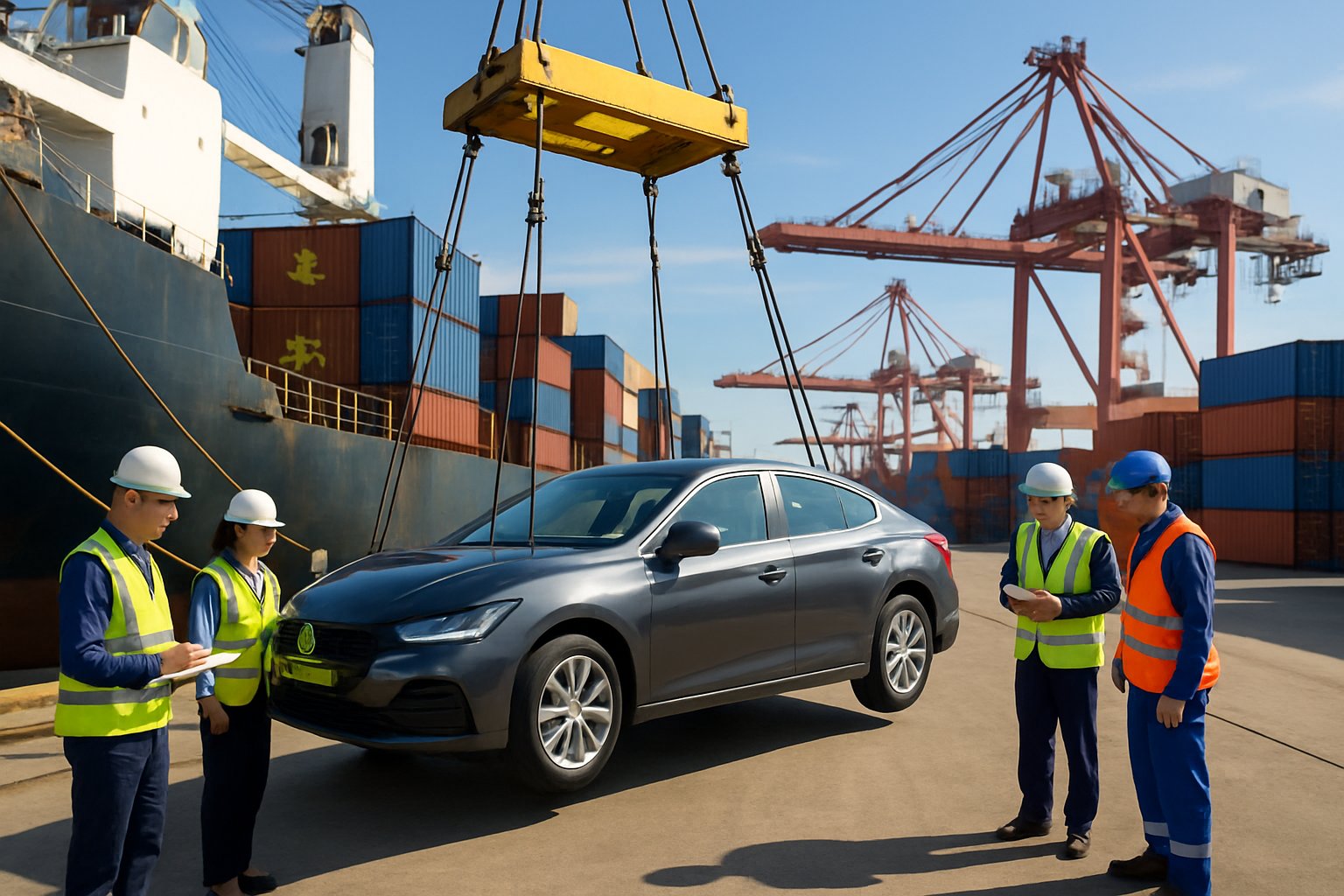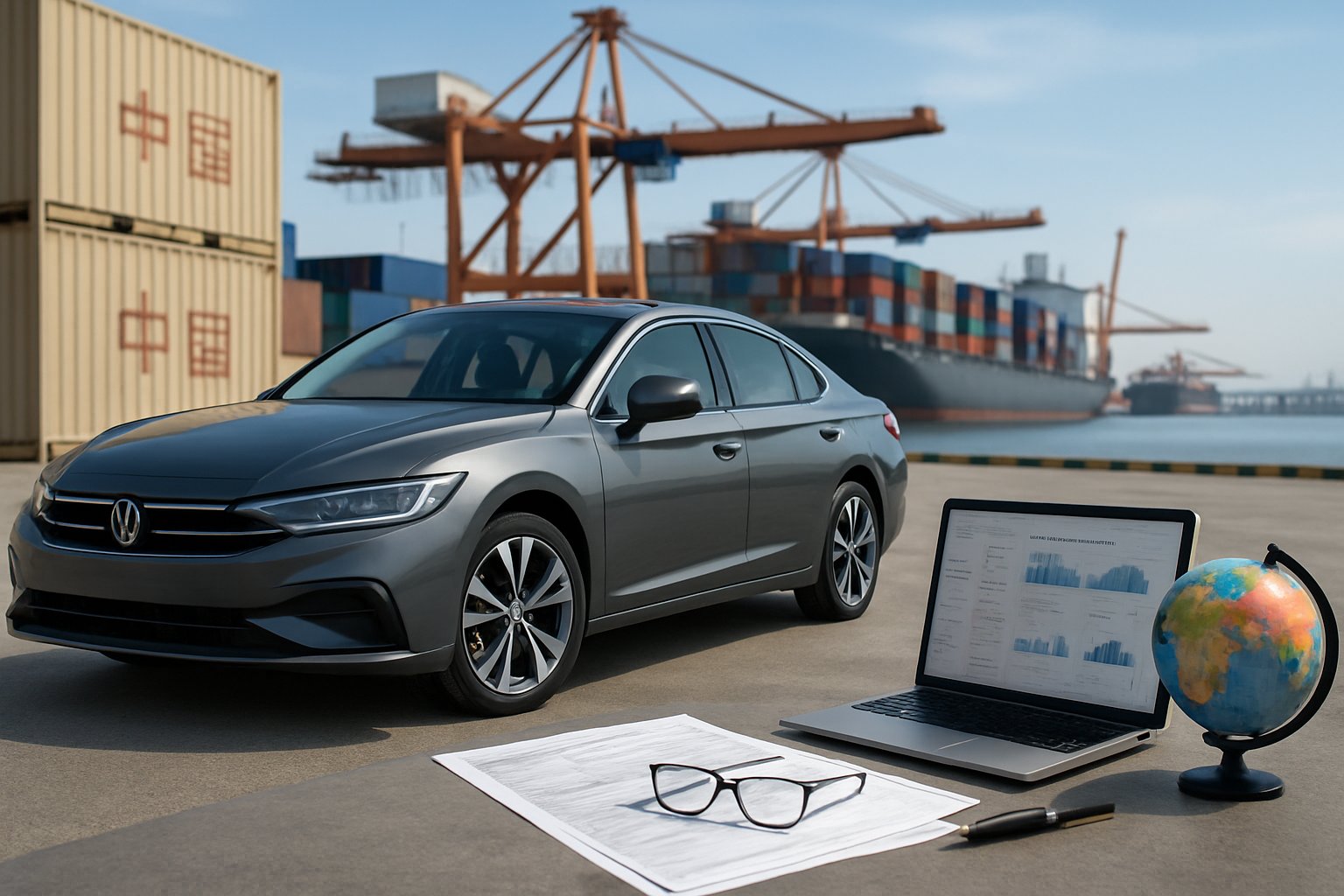Can I import a car from China? Yes, you can import a car from China to the U.S., but it's not a simple process. You'll need to follow multiple U.S. regulations, such as safety standards, emissions rules, customs clearance, and possibly modify the vehicle to meet legal requirements.
After shipping, customs clearance, and inspection, you'll register it and buy insurance.
Want detailed steps, costs, and legal workarounds? Read on to see if bringing your dream Chinese car to U.S. roads is possible!
Can I Import a Car from China?

You can import a car from China, but there are specific rules you need to follow. You’ll have to check regulations, understand shipping processes, and make sure your car meets safety standards.
It’s possible, but you’ve got to stay on top of the legal and practical details.
Is It Legal to Import a Chinese Car to the US?
Yes, it’s legal to import a car from China to the US, but your vehicle must meet US safety and emissions standards. The car needs to pass inspection by the Environmental Protection Agency (EPA) and the Department of Transportation (DOT).
Cars not built to US standards may need expensive modifications. You’ll also have to pay import taxes, customs duties, and fees.
Some Chinese cars get more scrutiny because of safety or emissions differences. Working with a registered importer can help you figure out the rules, but always check if your specific make and model is eligible before you start.
Need smooth cross-border operations? Read Mastering Import-Export Regulations for Business Success in China.
Compliance & Eligibility

Importing a car from China means you have to understand strict U.S. rules about safety and emissions. Your vehicle must meet federal standards or qualify for exemptions.
If your car doesn’t fit the rules, you’ll need to work with professionals who can legally modify it.
FMVSS & EPA Standards or 25-Year Exemption
Your imported car needs to follow the Federal Motor Vehicle Safety Standards (FMVSS) and EPA rules. These standards cover crash safety, emissions, and other important features.
If your car doesn’t meet these, you generally can’t import it legally. There’s an exception if the vehicle is 25 years or older.
Cars over 25 years old get an exemption from FMVSS and EPA standards. That makes classic cars easier to import since they skip modern compliance tests.
Before importing, check if your Chinese car has compliance certificates that prove it meets these standards. Without proper certification or the 25-year exemption, you might not be able to register or use the car in the U.S.
Registered Importer Modifies Non-Certified Vehicles
If your car from China is less than 25 years old and doesn’t meet U.S. standards, you need a Registered Importer (RI). An RI is a specialist authorized to modify cars to comply with FMVSS and EPA rules.
The RI will update safety features and emissions controls to bring the car up to standard. After modifications, you’ll get paperwork to show the car now meets all U.S. regulations.
This process can get expensive and take time. Ask about the RI’s experience with Chinese vehicles and their fees before you start.
The RI will provide key paperwork, including compliance certificates, which you’ll need to finish importing and registering your car.
Tariffs & Duties

When you import a car from China, you’ll face various import duties and taxes depending on the vehicle type. These extra costs can add up fast, so it’s important to plan your budget carefully.
General Car (2.5%), Trucks (25%), EVs (~100–247%)
Most passenger cars have an import duty of 2.5% of the vehicle’s declared value. That’s not too bad compared to other vehicle types.
Trucks, though, get hit with a 25% duty—much higher, aiming to protect U.S. manufacturers. Electric vehicles (EVs) from China face the steepest tariffs, with duties running from about 100% up to 247%.
These high tariffs try to encourage EV production in the U.S. and discourage importing foreign EVs. Expect to pay extra fees like customs charges, state taxes, and sometimes anti-dumping tariffs.
Clean-Sheet Chinese EVs Face Steep Import Costs
If you’re considering a clean-sheet EV designed entirely in China, brace yourself for much higher import costs. These vehicles don’t get exemptions or reductions, so they can face the maximum tariffs and taxes.
The U.S. government put these duties in place to support local EV makers and address trade imbalances. Besides the duty, you’ll need to meet U.S. safety and emissions standards, which can tack on more costs.
Sometimes, modifications are required before you can register the car. You really need to factor in these tariffs and compliance costs before you import a clean-sheet EV from China—it might double or triple the car’s price.
Curious how Chinese tariffs impact the world? Read How China Tariffs on US Goods Affect Global Trade.
Steps to Import

Importing a car from China isn’t just paperwork—you’ll need to choose a shipping port, prep the car, and gather documents. Missing a step can mean delays or extra fees.
Choose Port, Clean Undercarriage, Ship
Pick a Chinese port that fits your needs. Shanghai, Shenzhen, and Guangzhou are popular options and offer both container shipping and roll-on/roll-off (RoRo) services.
Container shipping is more secure, but RoRo can be cheaper if the car can be driven onto the ship. Before shipping, clean the car’s undercarriage—many countries, including the U.S., require it to prevent pests or contaminants.
Sometimes you’ll need a certificate to prove the car’s been cleaned. Make sure you get a bill of lading, which proves you own the car during shipping and helps you claim it at arrival.
Double-check all shipping details to avoid customs headaches.
Clearance, Broker, DOT/EPA Compliance, Registration
When your car arrives at a U.S. port, you need to clear customs. Hiring a customs broker makes this a lot easier—they’ll handle paperwork and help you pay duties and taxes.
You must submit DOT Form HS-7 and EPA Form 3520-1. These forms show your car meets safety and environmental rules.
Keep your bill of sale handy, since it verifies your purchase price for duty calculations. After customs, you’ll need to register the car in your state.
Registration requires proof of customs clearance, DOT/EPA compliance, and insurance. Check with your local DMV for specific requirements and fees.
Special Routes & Proof
There are a few legal paths to import cars from China that avoid some of the strictest regulations. These routes need proof of the vehicle’s age or intended use.
Show-&-Display or 25-Yr Old Car Exemption
If your car is over 25 years old, you can import it without meeting all current U.S. safety and emissions standards. That’s the 25-year-old exemption.
You’ll need proof, like the original title or registration documents, to show the car’s age. There’s also the Show-&-Display rule for vehicles that are historically or technologically significant.
For Show-&-Display, you have to prove you’ll use the car only for exhibitions, club activities, or display—not daily driving. Both options mean you’ll need to keep detailed records and might face limits on how often or how far you can drive on public roads.
Low-Speed Vehicle Workaround
Low-speed vehicles (LSVs) are small cars with a max speed of about 25 mph. They have looser import rules, so some Chinese vehicles fit this category.
To qualify, the vehicle needs to meet LSV standards, like speed limits and basic safety features. Check with your state’s DMV, since rules for road use vary.
Some states allow LSVs on local roads but not highways. If your Chinese car fits as an LSV, you can save on import costs and paperwork, but you’ll need factory documentation to prove it matches LSV specs.
Dealing with returns or legal issues? Read Chinese Factory Sent Defective Products: What Now?
Outlook & Considerations
Importing a car from China comes with some big variables. Tariffs set by the U.S. government can shift and change your costs overnight.
You’ll also need to navigate safety rules and possible supply chain hiccups, which can slow things down or make the process more complicated.
Biden/Trump Tariffs May Still Shift
Tariffs on Chinese imports, set by both the Trump and Biden administrations, still impact car prices. These tariffs can tack 25% or more onto your car’s cost.
The government can change these tariffs anytime, depending on trade talks or politics. Because of that, your total import cost can jump unexpectedly.
Check the latest tariff rates before you buy. Rarely, some models might be exempt if assembled outside China, but that’s not common.
Planning for tariff changes can save you from big surprises. Keep an eye on U.S.-China trade news if you’re serious about importing.
Safety, Supply Chain, and Legal Speed Bumps
Chinese cars have to meet strict U.S. safety and emissions rules, set by the DOT and EPA. If your car doesn’t comply, you risk delays or being unable to register it.
Getting all the paperwork and certifications done is crucial. Supply chain issues—like shipping delays or parts shortages—can slow your import, too.
Shipping times usually range from 20 to 40 days if all goes well, but unexpected delays can add to your wait and costs. Work with reliable suppliers who know U.S. laws and standards.
If you ignore the regulations, you could face fines or even lose your car at customs. Map out your import plan, covering inspections, taxes, and logistics, before you buy.
Final Thoughts
Importing a car from China to the U.S. is legal—but tricky in 2025. You must meet strict U.S. safety and emissions standards or qualify for exemptions like the 25-year rule and show‑and‑display.
EVs face steep tariffs—100% under the IRA plus a 25% auto tariff. You’ll also need a Registered Importer to modify the vehicle, ship it, clear customs, and get it inspected and registered. A few, like the Wuling MINI‑EV, have succeeded using low‑speed rules, but expect high costs and complexity.
If you're up for the challenge, this guide lays out every step. Contact China Legal Experts to navigate the legal and regulatory maze.
Looking to import from China? Read China Import Tariffs: Essential Guide for Importers.
Frequently Asked Questions
Can I buy a used car from China?
Yeah, you can buy a used car from China. Still, a lot of these cars don’t meet U.S. safety or emissions standards.
Make sure to check the car’s condition yourself. It’s also smart to confirm it fits all import rules before you get too excited.
How much tax will I pay if I import from China?
The tax you’ll pay depends on the car’s value, type, and engine size. Most folks end up paying an import duty between 2.5% and 25%.
Don’t forget about state sales tax and a few other fees at customs. It all adds up.
How much does it cost to bring a car from China to the US?
Shipping a car from China usually runs between $1,000 and $3,000. The price really depends on how you ship it and how far it’s going.
On top of that, you’ll need to cover customs fees, port charges, and whatever it costs to move the car once it lands. It’s not pocket change.
What are the rules for importing from China?
Importing a car means following some strict U.S. rules for emissions, safety, and paperwork. The car needs to meet EPA and DOT standards, no exceptions.
You’ll also need to gather documents like the bill of sale, customs declaration, and compliance certificates. It’s a bit of a paper chase, honestly.
Why is the 25 year import law a thing?
The 25-year rule stops you from importing most cars under 25 years old unless they meet U.S. safety and emissions standards.
Lawmakers want to keep vehicles that don’t meet these requirements off American roads. Once a car hits 25 years old, though, the rules change and importing gets way easier.
Subscribe to receive updates
Subscribe to receive the latest blog posts to your inbox every week.






